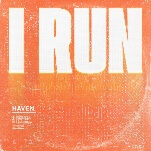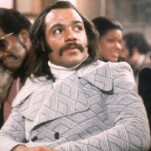30 For 30: "The U"

Though the 30 For 30 format allows filmmakers to work within blessedly broad parameters, one condition has paid off brilliantly so far: The directors must have a personal stake in the subjects they cover. So instead of dispassionate, neither-here-nor-there accounts of sports stories over the past 30 years, we’ve had Barry Levinson recapturing the ache of the Colts leaving his city, Peter Berg noting the curious spectacle of the greatest hockey player that ever lived coming to his non-hockey town, and Mike Tollin going to war against Donald Trump for ruining the nascent football league that gave him his livelihood. In this respect, perhaps above all, the series bears that Bill Simmons’ stamp: The “homer,” the fan, the sports guy who’s going to make his side of the argument.
Granted, not every 30 For 30 episode has had such a strong point-of-view—“Without Bias” and “The Legend Of Jimmy The Greek” suffered greatly for their cookie-cutter documentary approach, and “Muhammad And Larry,” the best of the series by far, was more subtle portraiture than argument—but of the ones that have, Billy Corben’s “The U” may be the most revelatory, if only because it’s arguing up a steep incline. If you were living anywhere outside of South Florida in the ‘80s, chances are likely that you hated the University Of Miami football team—both for their astonishing, merciless dominance on the field and their habit of rubbing everybody’s faces in it. In sports, we expect greatness and humility to go hand-in-glove; and when they don’t, out come the professional cuckolds talking about how a team is “disgracing the game” or “not winning in the right way.”
I still don’t like those old Hurricane football teams, but “The U” at least gave me the context to understand them better and respect the source of their collective rage and swagger. With his lightning-paced, pulpy documentaries Cocaine Cowboys and Cocaine Cowboys 2: Hustlin With The Godmother, Corben has established himself as an energetic young chronicler of Miami’s criminal underworld. He’s both a hard-working journalist who can connect these vast and dangerous networks while keeping tabs on the city’s history and someone who clearly enjoys a good yarn, even if it tends to glorify some ugly, murderous behavior. (Corben’s inability to grasp the moral dimension of his subject matter resulted in a first film, Raw Deal: A Question Of Consent, that may be the most repugnant, exploitative documentary I’ve ever seen. Lawsuits kept it from getting screened outside the Sundance Film Festival in 2001.) Corben’s abiding interest in Miami’s seething underbelly makes him the perfect guy to tell the story of UM in the ‘80s; the neighborhoods that helped revitalize the moribund program are the very same that were ravaged by the poverty, drugs, violence, and racial animus detailed in the Cocaine Cowboys movies.
If you’ll indulge me a little personal context, I’ve attended two colleges in my lifetime: The University Of Georgia as an undergrad in the early to mid ‘90s, and The University Of Miami as a grad student in the late ‘90s. Both colleges have major football traditions, but the campuses on game day are a study in contrasts: At UGA, a state school with 35,000 students, the football stadium is dead center on campus, the dividing line between the liberals arts programs to the north and the science and nerdy arts programs to the south. When the Bulldogs are at home, there’s no avoiding the throngs of campers and tailgaters and alumni and students that descend on campus. The University Of Miami, by contrast, is a private school with 15,000 students, and since the games are played off-campus (during the time documented in “The U,” at the cavernous concrete pit known as the Orange Bowl), you would never know the difference between a weekend when the ‘Canes are at home and any other weekend during the year. The place is dead.
Here’s my point: The Georgia Bulldogs are an integral part of the college experience in Athens, whether you go to the games or not. The Miami Hurricanes are less connected to the college than the city at large, which makes it much more vulnerable as a program. As Corben reveals in the early going, the Miami football program before Howard Schnellenberger came along was a disaster, in part because it has to compete for the same fickle fanbase that the city’s professional teams do. Should the program slide further back into mediocrity (as it’s in the process of doing), the legacy of the ‘80s teams would be the only thing keeping it from oblivion.








































